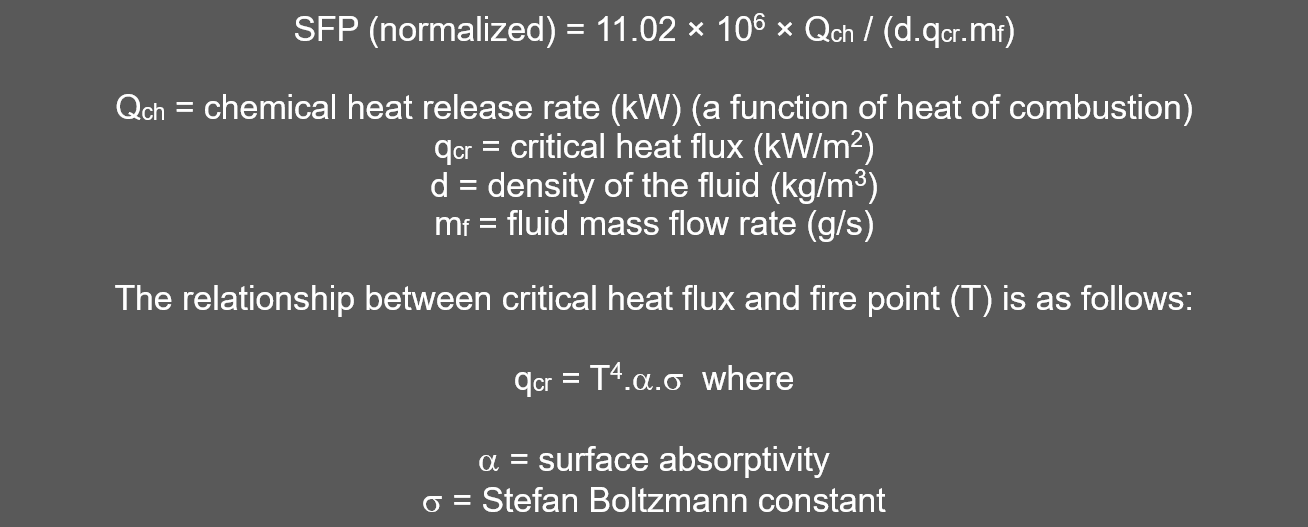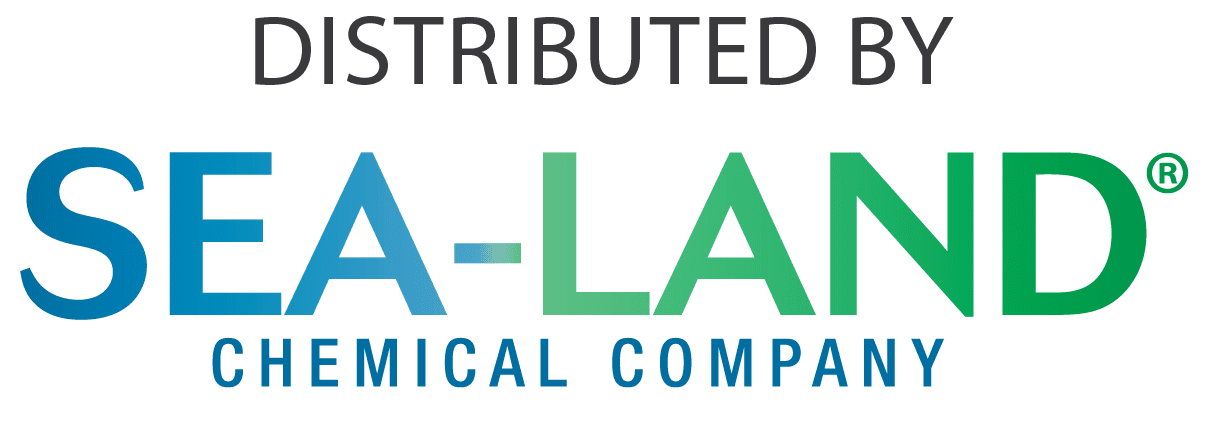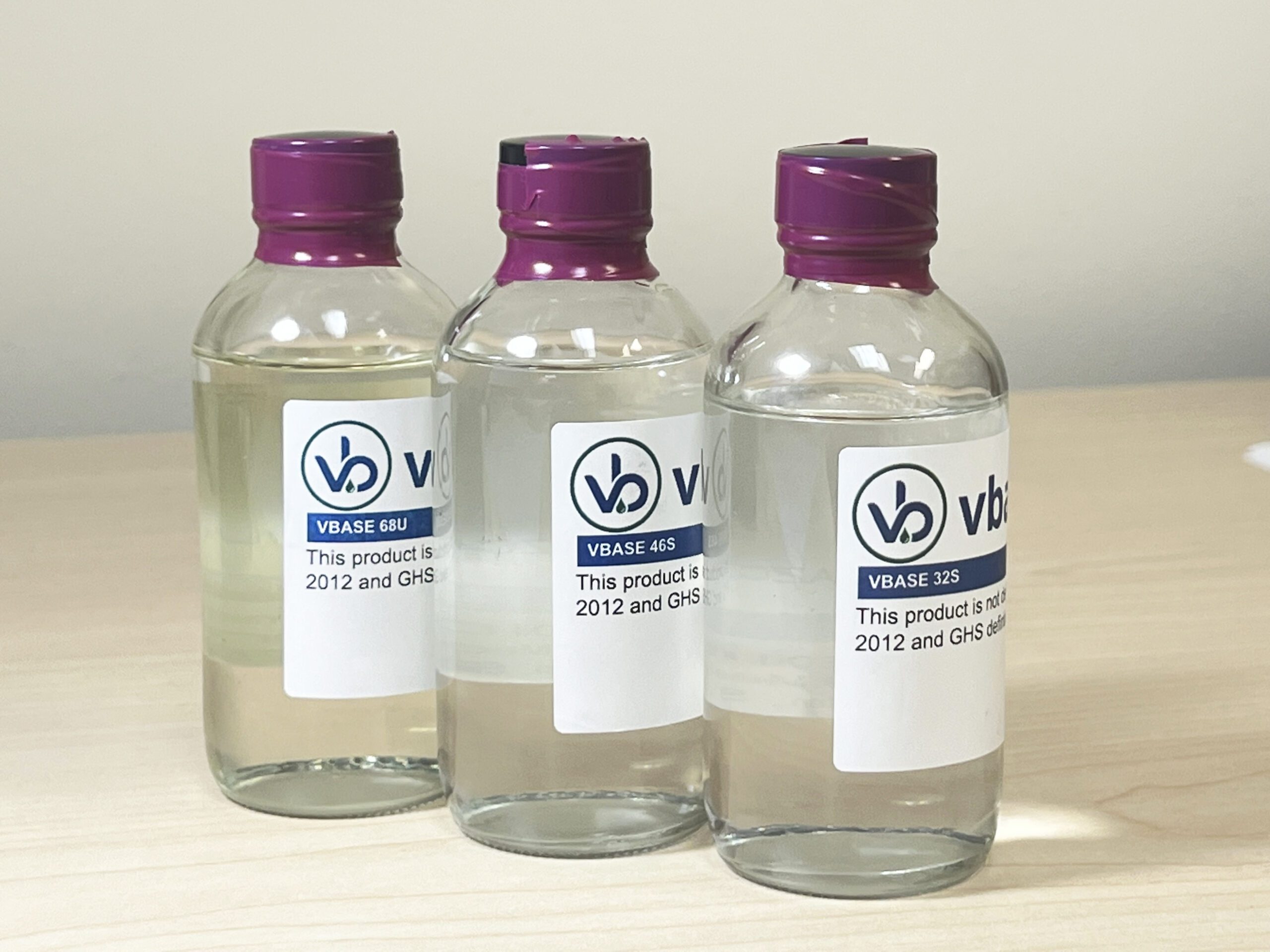VBASE oils for Fire Resistant Hydraulic Fluids
Formulate FRHF with NEW High-Performance VBASE® SPE™ Base Oils
Most hydraulic systems use conventional petroleum-based fluids. However, for industries like mining, aerospace, steel and aluminum processing, the use of petroleum-based hydraulic fluids poses significant risks as hot metal and open flames serve as potential ignition sources. The use of petroleum oils in such settings would present a serious fire hazard. Novel VBASE Secondary Polyol Ester™ base oils offer formulators a new tool for designing high-performance, fire-resistant lubricants for these critical industries.
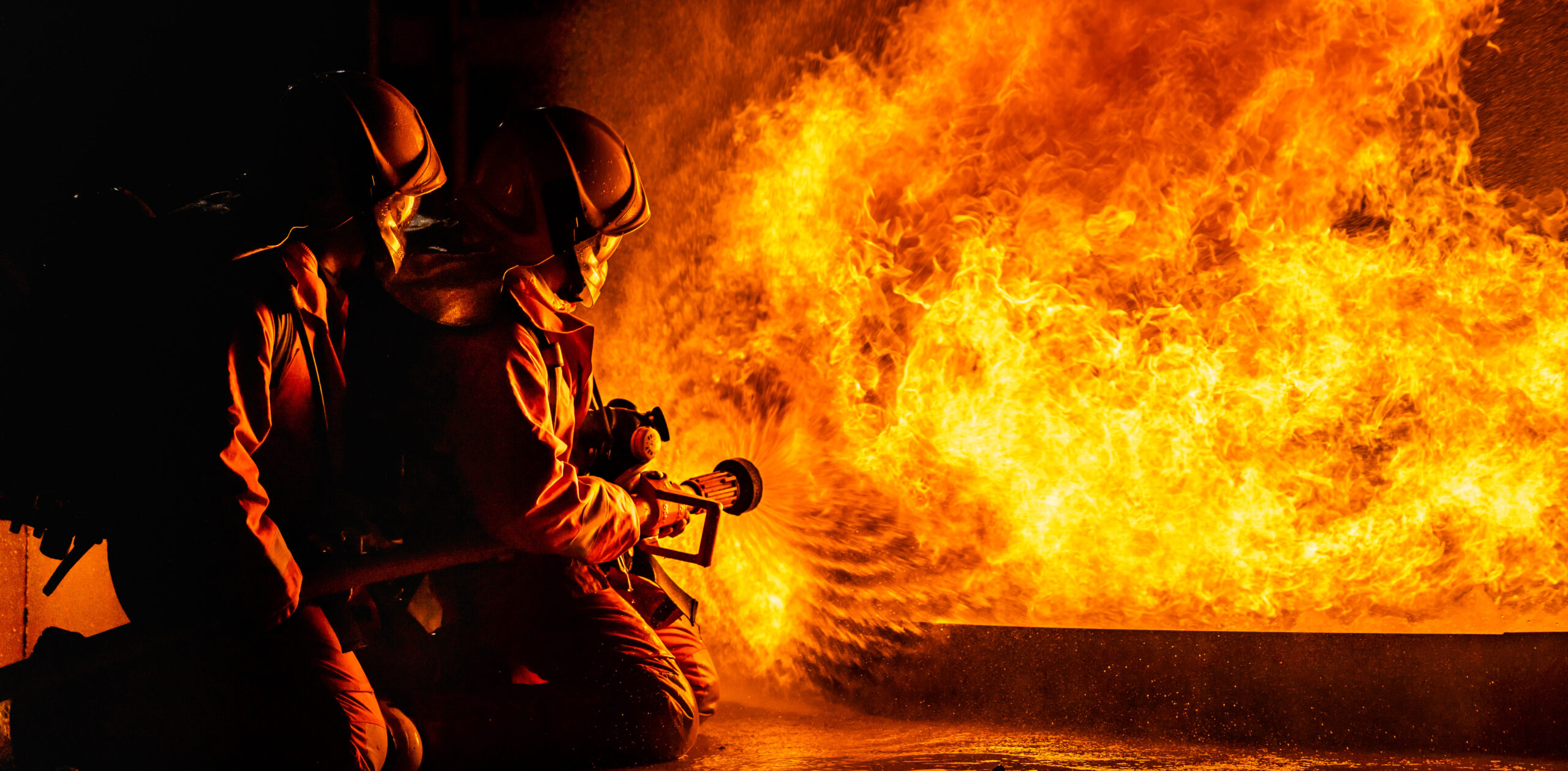
Current anhydrous-based fire-resistant fluids, based on phosphate esters, synthetic polyol esters, vegetable oils, and polyalkylene glycols, offer greater fire protection than traditional petroleum oils. However, each of these alternatives has its unique benefits and challenges:
- Phosphate Esters: Known for their high auto-ignition temperatures, but their degradation can produce dangerous by-products.
- Synthetic Polyol Esters: Offer high fire points but are prone to hydrolysis, shortening fluid life.
- Vegetable Oils: Limited to lower-temperature systems due to rapid oxidation at high temperatures, leading to deposit formation.
- Polyalkylene Glycols: Offer good high-temperature stability and excellent deposit control, but they have lower auto-ignition temperatures and compatibility challenges with other fluids.
With VBASE base oils, formulators can design fire resistant fluids with good fire resistance properties, excellent hydrolytic stability, and deposit control which provides peace-of-mind to end users and equipment reliability. These base oils offer a compelling value proposition by addressing the limitations of current industry technologies:
Excellent Fire-Resistance Properties: VBASE 46U and 68U base oils provide high fire points and low heats of combustion, primarily due to their oxygen-rich structures. This property makes them more favorable for fire-resistant applications when compared to petroleum oils and other synthetic alternatives. (Data below)
Hydrolytic and Oxidation Stability: VBASE 46U and 68U can deliver extended oil drain intervals due to their superior hydrolytic and oxidation stability versus some other synthetics like unsaturated polyol esters. This feature is a critical advantage, especially when longer fluid life is needed, making them suitable for a wider range of stationary and mobile equipment. (Learn more at vbaseoil.com/spe)
Improved Cleanliness and Varnish Control: The in-built detergency functionality of VBASE 46U and 68U enhance cleanliness and varnish control, thereby improving equipment reliability. This characteristic is essential in applications where maintaining the cleanliness of equipment and minimizing varnish formation is crucial for optimal performance. (Learn more at vbaseoil.com/spe)
| | Petroleum (1) | VBASE 46U | VBASE 68U | |
|---|---|---|---|---|
| Flash point (COC), °C | ASTM D92 | 200-240 | 300 | 296 |
| Fire point, °C | ASTM D92 | 230-250 | 324 | 322 |
| Auto-ignition temperature, °C | ASTM E659 | 300 | 399 | 408 |
| Heat of combustion (MJ/kg) | ASTM D240 | 43-44 | 39.4 | 34 |
| Noack volatility, % weight loss | ASTM D5800 | 5-9 | 0.8 | 1 |
| Density at 40°C, g/ml | ASTM D4052 | 0.80-0.85 | 0.97 | 0.95 |
(1) Petroleum Base Oils (ISOVG-46)
The flash point of an oil is the lowest temperature at which sufficient vapor is given off to ignite in air, when exposed to an open flame. VBASE 46U and 68U exhibit significantly lower volatility and higher flash point values than petroleum oils.
The fire point of a fluid is the lowest temperature at which sufficient vapor is given off to burn for at least 5 seconds after ignition by an open flame. VBASE 46U and 68U offer excellent high fire points.
The auto ignition temperature of a substance is the lowest temperature at which it spontaneously ignites in a normal atmosphere without an external source of ignition, such as a flame or spark. VBASE 46U and 68U exhibit values of about 400oC and significantly higher auto ignition temperature than petroleum oils.
The heat of combustion is the amount of heat released during the combustion of a specified amount of a substance. VBASE 46U and 68U release up to 20% less heat than petroleum oils.
Noack Volatility measures a fluid’s tendency to evaporate at high temperatures in % weight loss. The values for VBASE 46U and VBASE 68U are 0.8% and 1.0%, respectively, which are significantly lower than the 5-9% range for conventional petroleum-based oils. The much lower Noack Volatility values indicate VBASE oils have minimal evaporation loss and, thus, a lower fire risk when exposed to an open flame.
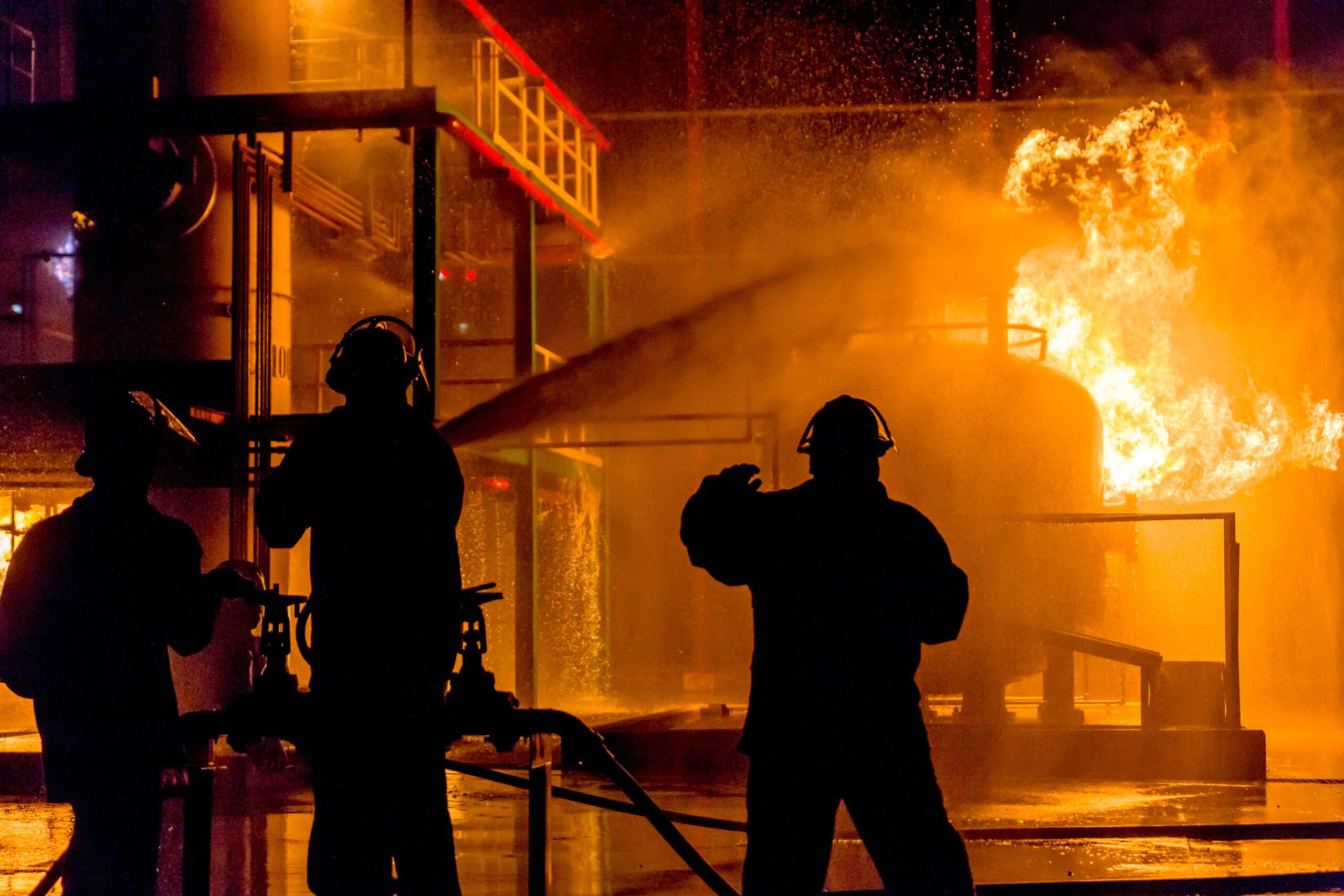
Additional Data - VBASE 68U
High-Temp, High-Pressure Spray Ignition
791D (FTM-6052)
Under federal standard 791d(6052) high temperature – high pressure spray ignition, oil is heated to 100° F and pressurized to 1000 psig. The pressurized oil is then sprayed through a nozzle across an open flame. VBASE 68U did not ignite and was rated as non-flammable in this test.
Lubricants that earn FM Approval have demonstrated superior fire resistance properties versus petroleum oils and can reduce the risk of fires occurring in industrial settings. This important certification hinges on Factory Mutual Approval Standard 6930, Flammability Classification of Industrial Fluids, which assesses fluids for their fire resistance performance using the Spray Flammability Parameter (SFP). A fluid’s fire point, heat of combustion and density are very important parameters in achieving low SFP values. An industrial fluid with a Spray Flammability Parameter of 5 x 104 or less qualifies as FM Approved. A fluid’s SFP is calculated as follows:
With VBASE base oils’ lower heats of combustion, higher densities, and higher fire points than petroleum oils , formulators now have a new tool for building high-performance, fire-resistant lubricants to meet the FM Approval standard.
In addition to offering excellent lubricating performance and fire-resistant properties detailed above, VBASE base oils also boast an exceptional sustainability profile. VBASE® base oils are biobased (inclusion of renewable carbon >50%, certified USDA BioPreferred), readily biodegradable (>80% by OECD 301B), non-toxic (OECD 201, OECD 202, OECD 203, OECD 236), and non-bioaccumulating (OECD 117). VBASE base oils are also certified NSF HX-1 and thus suitable for formulation of H1 lubricants for use in and around food processing areas. All VBASE base oils are included on the European Ecolabel LuSC-List.
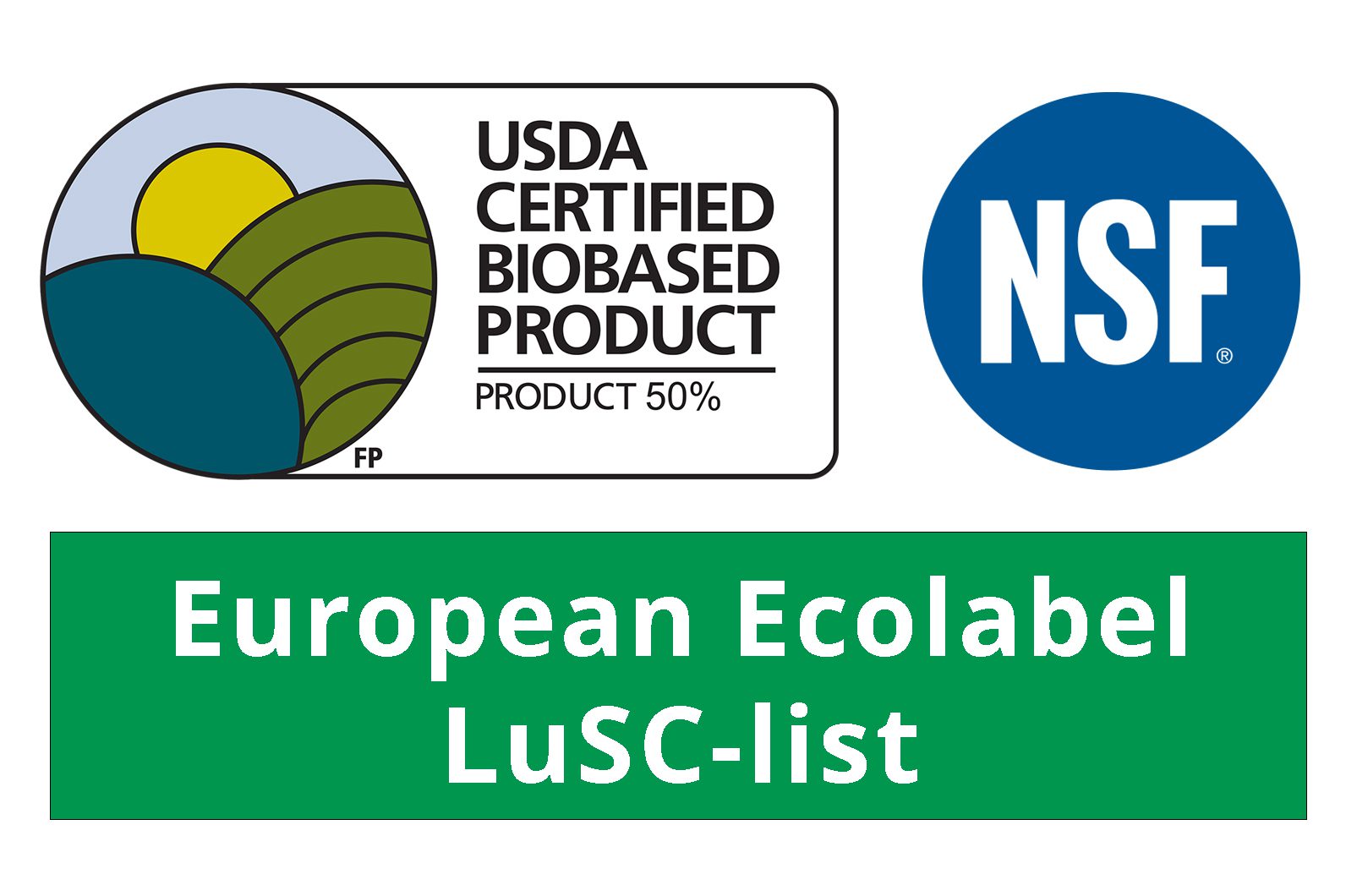
Today’s hydraulic systems are increasingly more compact with tighter filtration, smaller fluid reservoirs and higher pressures resulting in greater thermal and oxidative stresses on the hydraulic fluid. The degradation of petroleum oils through exposure to increased thermal stresses can lead to deposit and varnish formation in equipment resulting in poor fluid flow and blocked filters. Moreover, compact systems need to release air rapidly without foaming.
VBASE 46U and 68U have excellent low air release values and their oxygen rich and polar chemical structure creates in-built detergency to keep today’s equipment running clean and varnish free. The careful design of VBASE® SPE™ chemical structure ensures peace-of-mind to end users.
Learn more about the performance of VBASE® SPE™ oils in hydraulic fluid applications in this blog post on sealandchem.com: "High-Performance VBASE Base Oils For Environmentally Acceptable Hydraulic Fluids"

